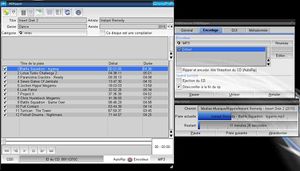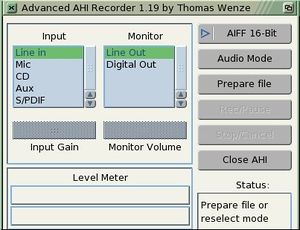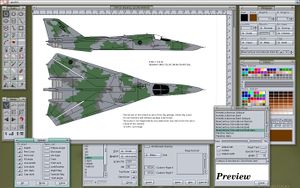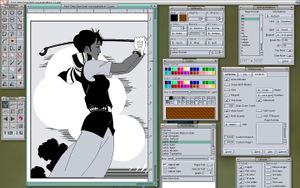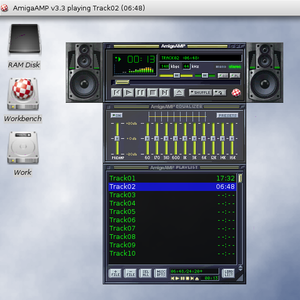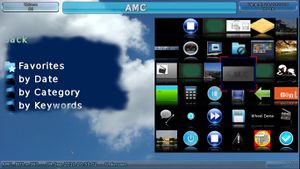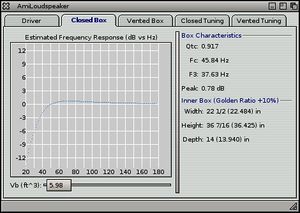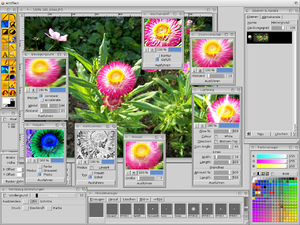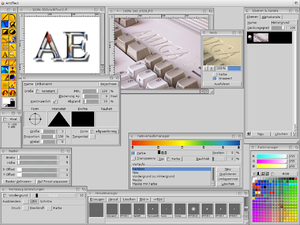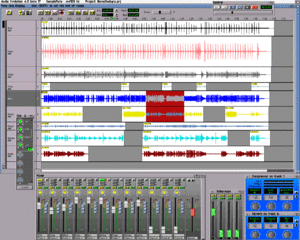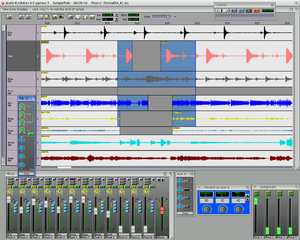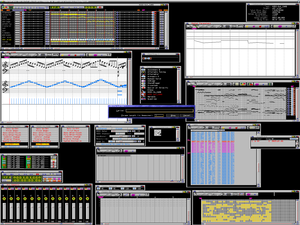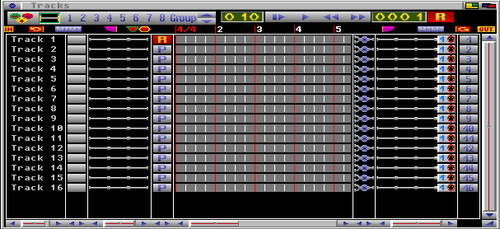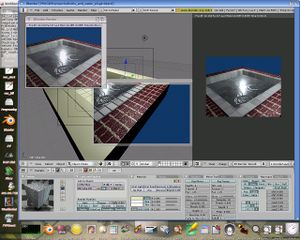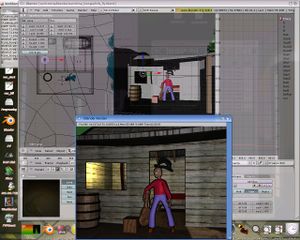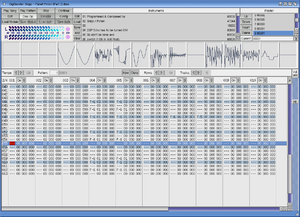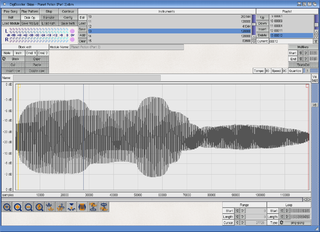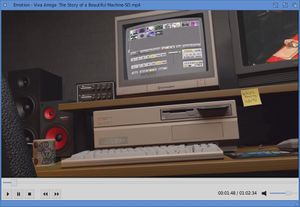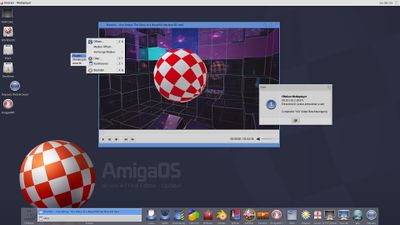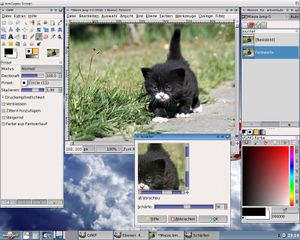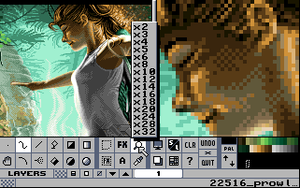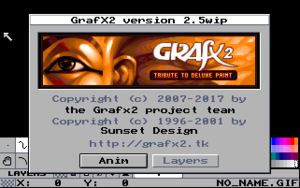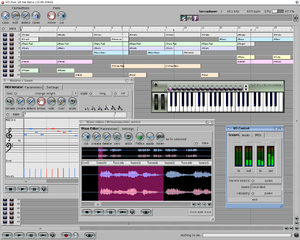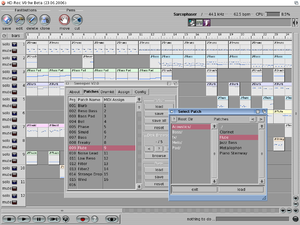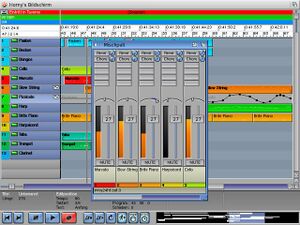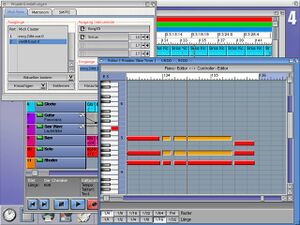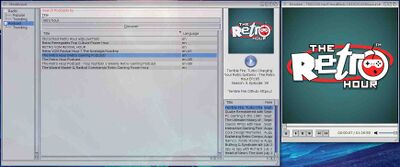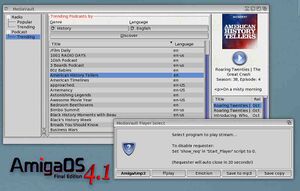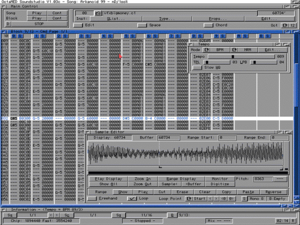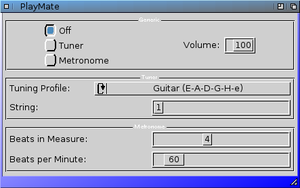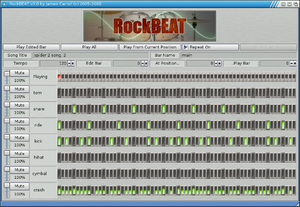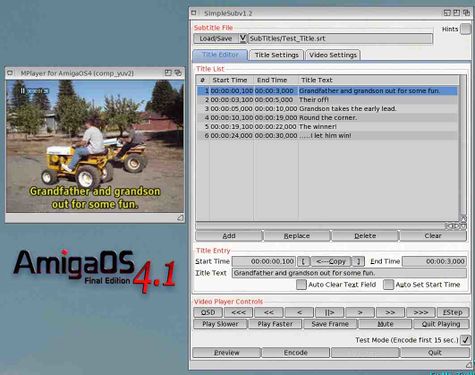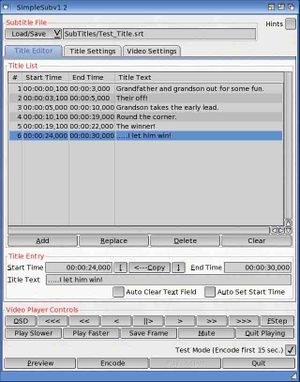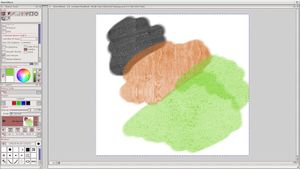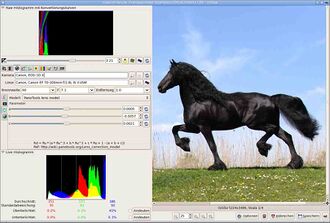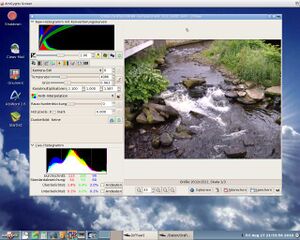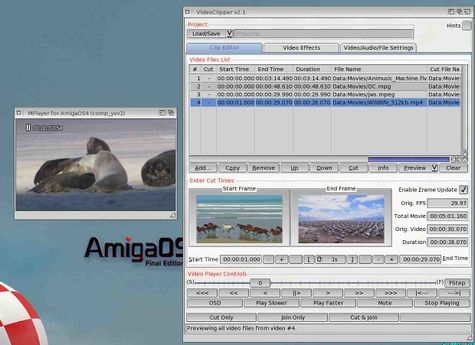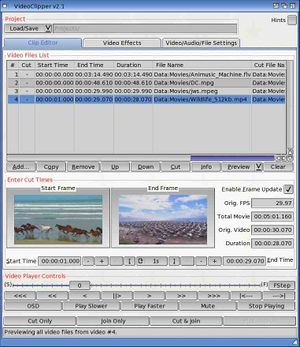Copyright (c) Hyperion Entertainment and contributors.
Difference between revisions of "AmigaOS Apps Audio & Video"
Ray Sbaitso (talk | contribs) m (Hosting site for software closed) |
Ray Sbaitso (talk | contribs) (Added MediaVault) |
||
| (One intermediate revision by the same user not shown) | |||
| Line 263: | Line 263: | ||
* Many more smaller improvements and bug fixes |
* Many more smaller improvements and bug fixes |
||
| − | [http:// |
+ | [http://os4depot.net/index.php?function=showfile&file=audio/record/audioevolution4.lha Audio Evolution OS4Depot webpage] |
== Bars and Pipes == |
== Bars and Pipes == |
||
| Line 487: | Line 487: | ||
[https://github.com/timoinutilis/midi-sequencer-amigaos Horny GitHub webpage] |
[https://github.com/timoinutilis/midi-sequencer-amigaos Horny GitHub webpage] |
||
| + | |||
| + | == MediaVault == |
||
| + | |||
| + | [[File:MediaVault1.jpg|400px|thumb|left|Image Source: MediaVault OS4Depot webpage]] |
||
| + | [[File:MediaVaultScript.jpg|300px|thumb|center|Image Source: MediaVault script OS4Depot webpage]] |
||
| + | |||
| + | |||
| + | |||
| + | MediaVault is an open source desktop application which can be used to discover online audio and video content. |
||
| + | |||
| + | With MediaVault you can discover radio stations and podcasts and listen to them using your audio player of choice. There are different ways to search and filter results, based on language, category/genre. |
||
| + | |||
| + | An optional script is also available to allow greater application flexibility. |
||
| + | |||
| + | [http://os4depot.net/?function=showfile&file=network/misc/mediavault.lha MediaVault OS4Depot webpage] |
||
| + | |||
| + | [http://os4depot.net/?function=showfile&file=network/misc/mediavault_script.lha MediaVault script OS4Depot webpage] |
||
== MilkyTracker == |
== MilkyTracker == |
||
Latest revision as of 23:00, 25 December 2021
AmigaOS has a rich audio and video history that has attracted many content creators and fans over the years. The tradition continues to this day with many members of the community continuing to use AmigaOS to both create and enjoy different types of media. The following list is a sampling of applications to help you enjoy audio, video and graphical media on AmigaOS.
Contents
- 1 Disclaimer
- 2 ADRipper
- 3 Ahirecord
- 4 Amifig
- 5 AmigaAMP
- 6 Amiga Media Center (AMC)
- 7 AmiLoudspeaker
- 8 ArtEffect
- 9 Audio Evolution
- 10 Bars and Pipes
- 11 Blender
- 12 DigiBooster 3.1
- 13 Emotion
- 14 FFMpeg
- 15 GIMP
- 16 GrafX2
- 17 HD-Rec
- 18 HivelyTracker
- 19 Horny
- 20 MediaVault
- 21 MilkyTracker
- 22 MPlayer
- 23 OctaMED Soundstudio
- 24 Playmate
- 25 RockBEAT
- 26 SimpleSub
- 27 SketchBlock Professional Edition
- 28 UFRaw
- 29 VideoClipper
Disclaimer
The following list of applications are neither endorsed by nor supported by Hyperion Entertainment. This list is strictly informational only.
ADRipper
ADRipper is an interface for easy ripping (extraction) and encoding of audio CDs. Track names and other metadata can be retrieved automatically through the CDDB database. If your CD-ROM drive is connected to a sound card, you can also listen to the CD from within the program.
Ahirecord
Ahirecord is a recording software application built on AHI.
Features include:
- Multithreaded level meter and status display
- Asynchronous writes to harddisk
- Ability to generate AIFF, WAVE or FLAC files
- Automatic file generation for recording several tracks sequentially
- Unattended automatic recording
Amifig
AmiFig is a vector graphics program based on the classic XFig software. As a Vector Graphics program the drawing is done via lines and points. A Vector image can also be scaled up or down to any size. Most Amiga art packages use bitmap graphics. AmiFig is special as it provides Amiga users with an extremely powerful Vector graphics editor.
AmigaAMP
AmigaAMP is a powerful realtime multi format audio player for Amiga computers. It is based on the amp decoding engine by Tomislav Uzelac and can do realtime decoding on 50 MHz processors and up. AmigaAMP is a completely free and non-commercial project. Fraunhofer IIS and THOMSON multimedia grant a free license to use their MPEG Layer-3 audio compression technology for this kind of software.
The player comes with a fully fontsensitive, style guide conformous Amiga GadTools user interface and features multithreaded non-blocking windows for main interface, stream information and playlist. GatTools GUI
Can be made to look and behave like WinAMP just by ticking a checkbox in the configuration window. It can load all the WinAMP skins and can display a realtime spectrum analyzer.
AmigaAMP can do realtime decoding even on slower 680x0 processors using Stephane Tavenard's highly optimized mpega.library. On a 68040-40 you can play Layer3 at half the sampling rate and with reduced quality. Full quality and sampling rate can be achieved with a 68060-50.
AmigaAMP 3 is completely AmigaOS4 native giving you the performance you'd expect from a fast PowerPC system. It can play MPEG Layer-2, Layer-3, OGG, M4A, FLAC, AIFF, WAV and MOD/S3M/XM/IT through built-in decoders and lots more via TuneNet plugins.
In addition to the 68k decoder AmigaAMP 2 comes with two PPC native decoding engines one for PowerUP and one for WarpUP. Both engines feature high quality realtime decoding of Layer2 and Layer3 streams, graphic equalizer settings and full visualization.
On a PPC604e-200 you can play two 128kbps Layer3 streams with equalizer switched on and crossfade between the two without taking much CPU load! The realtime analyzers will continue to run smoothly without any latency problems at all.
AmigaAMP uses the widespread AHI Audio System at device access level. You can use it with any AHI compatible soundcard as well as with the original Amiga audio chipset.
Current Features include:
- MPEG Layer-2, Layer-3, OGG, M4A, FLAC, AIFF, WAV and MOD/S3M/XM/IT playback
- TuneNet plugin support
- Visualisation plugin system
- ReAction based user interface
- Alternatively WinAMP compatible user interface
- Workbench application (you can drop icons on its window)
- AHI device-level access (uses default audio mode automatically)
- Native AmigaOS4 executable
- Metadata and album cover display
- Playlists and Repeat mode
- Volume, panning and crossfading
- Editable playlists and shuffle mode with skin support
- Graphic equalizer
- Shoutcast/Icecast internet radio support with recording option
Amiga Media Center (AMC)
AMC is the ultimate Media Center application for AmigaOS. With this tool you will be able to navigate and organize all your media: musics, videos and pictures will be at your fingers tips.
With AMC it’s easy to manage your picture albums, it’s easy to manage your videos and it’s easy to manage all your songs. The controls are optimized for remote controllers but you can easily change the key bindings. AMC integrates searching functions and removable mass-storage device auto detection, it’s easy to browse your USB drives and copy its contents in your computer.
With AMC you have full control over the database where all your media information is stored, you can change every single field of any media detected so you can organize freely your media using your own personal taste. In the database section you can handle in few steps your favorites and your playlists. You can even download information from TMDb (The Movie Database) to integrate missing information in your video database.
AMC is fully skinnable, this means that every single graphic element can be changed, the user interface is organized in frames and each frame can be skinned the way you like, advanced users can even mix themes!
AMC integrate a powerful Plug In system that allow Plug In developers to expand, patch and add new features to the program, there are no limits to expandibility!
Amiga Media Center (AMC) webpage
AmiLoudspeaker
AmiLoudspeaker is an audio loudspeaker design tool for AmigaOS. You enter your driver parameters and tweak the closed box or vented box design or both as desired. When finished, just print out the inner box dimensions and build away. Once you have finished building the boxes you can test and tune your loudspeakers as well.
Amilouspeaker OS4Depot webpage
ArtEffect
ArtEffect is the first art program that gives the Amiga artists the power they need to do their ArtWork.
ArtEffect unites painting and image processing under a particularly productive user interface. We emphasize on productive functions which are quick and simple to use in your daily work. However not only beginners will like it but also the professionals who are looking for high quality and who want to get the job done quickly and efficiently.
ArtEffect is not "just another" graphics program for the Amiga. ArtEffect is not oriented towards the current "standard" programs on the Amiga, but rather to the classic programs for professional image processing such as Photoshop (TM) and for creative painting like Fractal Painter (TM).
Proven concepts and ideas of these classic products were merged with the uncontested advantages of the Amiga. You see the result before you.
Processing scanned images and graphics of all kind has been the Amiga's domain ever since the machine appeared. Nevertheless the products available for the Amiga have not been widely recognized by the graphics world during recent years. ArtEffect is the first program to provide productive image processing functions under a uniform and effective user interface in the typical Amiga style.
Particularly important are the functions to select certain areas of an image for processing. Of course some filters are often applied to the entire image, but when dealing with image errors it is necessary to select a particular area. So one can retouch a scanned photo in a narrow area without influencing the quality of the rest of the picture.
ArtEffect offers a wide range of selection functions (they are also known as mask functions) such as: rectangle, circle, freehand and specialties like color selection, running masks and "Magic Wand" (selection of connected areas with similar color). With this all cases of selections of certain areas can be done quickly and easily.
ArtEffect offers more than 30 different effects with countless options. All effects are used the same way and they all have the same user interface. Each effect has e.g. a Preview in which the effect is applied to an image section. The range can be zoomed in and out. A progress bar shows the progress of the operation. The options are very extensive so every effect can be adapted to your personal wishes.
ArtEffect is an 68K application running transparently on AmigaOS 4.x.
Alinea Computer ArtEffect webpage
Audio Evolution
Audio Evolution 4 gives you unsurpassed power for digital audio recording and editing on the Amiga. The latest release focuses on time-saving non-linear and non-destructive editing, as seen on other platforms. Besides editing, Audio Evolution 4 offers a wide range of realtime effects, including compression, noise gate, delays, reverb, chorus and 3-band EQ.
Whether you put them as inserts on a channel or use them as auxiliaries, the effect parameters are realtime adjustable and can be fully automated. Together with all other mixing parameters, they can even be controlled remotely, using more ergonomic MIDI hardware.
Highlights of Audio Evolution 4.0:
- Non-linear editing on the time line, including cut, copy, paste, move, split, trim and crossfade actions
- Unlimited undo
- Many grid options to align regions
- Improved automation editing on the time line
- Record automation events during playback by mouse or MIDI remote
- Track height adjustment and higher quality waveform display
- Metronome with freely adjustable time signature
- Control the mixer and transport controls remotely with external MIDI hardware
- Native OS4 effect plug-ins with realtime parameter control and metering
- New plug-ins, including a new compressor, chorus, ducking delay and sound replacer *
- Effect parameter automation
- WAV import
- 'Repeat region' functionality with intervals
- Automatic regionize with export to BurnIt
- ARexx interface
- Communicate and synchronize with other applications (like B&P) easily through the Master Control Bus
- Enhanced look using a 256 color screen. Most imagery can be changed by the user.
- Experimental Dolby Pro Logic encoder
- Brand new manual in HTML and PDF formats
- Many more smaller improvements and bug fixes
Audio Evolution OS4Depot webpage
Bars and Pipes
Bars n Pipes is a MIDI sequencer with some very creative abilities. By dropping tools on to Pipelines, it is easy to experiment without making permanent changes to the recorded song.
MIDI is an acronym for "Musical Instrument Digital Interface", and it allows remote control of synthesizers, audio mixers, and a variety of other production equipment. "sequencer" is simply a device or program that allows recording, playback, and editing of MIDI events.
Bars n Pipes lets you record, edit, and play back musical performances. This is NOT the same as audio recording. In a sequencer, we can make changes to the volume, tempo, and even the instrument being played, even AFTER the recording has been made. This offers a level of flexibility that audio recording does not have.
As an editor, Bars n Pipes lets you view the recorded performance as a list of events, or as "Bars" on a staff, with the length of each bar showing the note duration. You can simply drag notes around to change time, pitch or length, within user selectable boundaries.
The output of each track is represented by a Pipe, carrying the performance to an output. Bars n Pipes will let you drop any variety of tools on to the track to change the output, it does this without making any changes to the actual recording. So you can add an "echo" tool, even while the song is playing, and suddenly you'll hear notes on that track begin to echo. If you click on the tool you just dropped, you'll get a window that lets you control the parameters of the echo effect. Bars and Pipes gives you the tools to duplicate a track, or split high/low from any setpoint, quantize the notes to "tighten up" the timing, or unquantize tools to make the drummer sound a bit drunk. Create inversions, or chords, modify volume, velocity, or any other parameter you can name from a selection of over 80 tools. You can combine tools into patterns of your own design, and create "Macro-Tools" that you can add to your toolbox. If you decide that you want to make permanent changes, you can "toolize" a selected region, track, group, or the entire song. This flexible use of tools allows you to experiment without any fear of making a wrong move. It really frees you up to enjoy the experience.
Bars and Pipes OS4Depot webpage
Bars and Pipes Professional Manual
Blender
Blender was first conceived in December 1993 and born as a usable product in August 1994 as an integrated application that enables the creation of a diverse range of 2D and 3D content. Blender provides a broad spectrum of modeling, texturing, lighting, animation and video post-processing functionality in one package. Through its open architecture, Blender provides cross-platform interoperability, extensibility, an incredibly small footprint, and a tightly integrated workflow. Blender is one of the most popular Open Source 3D graphics applications in the world.
Aimed at media professionals and artists world-wide, Blender can be used to create 3D visualizations, stills as well as broadcast and cinema quality videos, while the incorporation of a real-time 3D engine allows for the creation of 3D interactive content for stand-alone playback.
Originally developed by the company 'Not a Number' (NaN), Blender now is continued as 'Free Software', with the source code available under the GNU GPL license. The Blender Foundation in the Netherlands coordinates its ongoing development.
Between 2008 and 2010, Blender has been entirely re-coded to improve its functions, workflow and interface.
DigiBooster 3.1
DigiBooster 3 follows the traditional tracker's way of making music with an advanced audio processing engine, and an up-to-date MUI based graphical user interface. It retains backward compatibility with its Amiga ancestor, DigiBooster Pro 2. On the other hand the program code has been written from scratch. Its modular design gives it a straightforward path for future development.
Features include:
- High quality audio engine, 24 bits, up to 192 kHz
- Backward compatibility with DigiBooster Pro 2.x
- MUI based interface, dynamically adapts itself to the screen size
- All sound effects are executed in single step mode
- Single step auto-synchronization to the module tempo
- Highly configurable
- ARexx port offering full control of the program from scripts
Emotion
Emotion is a powerful multimedia player specially developed for AmigaOS 4.x. The easy-to-use interface, deliberate limitation to required basic functions, as well as optimization on operating system functions, makes Emotion to a software that integrates perfectly into the current AmigaOS.
The use of FFMpeg as subsystem for video and audio decoding (through AmigaOS specific shared libraries) allows Emotion to access proven and powerful technologies in the background. Due to the Reaction based interface in combination with optimized operating system functions and FFMpeg as a decoder, Emotion understands itself as its own interpretation of a multimedia player which is not just a port of existing open source projects but tries to connect tried and tested technologies with the ecosystem of AmigaOS.
Features:
- Compositing based video scaling on RadeonHD graphics cards
- YUV video acceleration (RadeonHD 2.0)
- Video overlay (PIP) on Radeon 9xxx graphics cards
- Software rendering, on classic Amiga and emulation
- Supports local video files and web streams
- Fullscreen, window und borderless mode
- Recent list, for reopen media files
- Supports video subtitles and multiple audio tracks
- Optimization for Altivec
- Enable / disable video filters (on compositing based graphics cards)
- FFMpeg based video decoding, optimized for the most used codecs
- Easy-to-use Reaction based GUI, AISS Icons, AmigaOS 4.1 F.E. context menu
- Conscious focus on basic functions and optimization for AmigaOS
- ARexx port
- Manual and automatic Frameskip
FFMpeg
FFMpeg is a very fast video and audio converter that can also grab from a live audio/video source. It can also convert between arbitrary sample rates and resize video on the fly with a high quality polyphase filter.
The command line interface is designed to be intuitive, in the sense that FFMpeg tries to figure out all parameters that can possibly be derived automatically. You usually only have to specify the target bitrate you want.
GIMP
GIMP is an acronym for GNU Image Manipulation Program. It is an application for such tasks as photo retouching, image composition and image
authoring.
It has many capabilities. It can be used as a simple paint program, an expert quality photo retouching program, an image format converter, etc.
GIMP is expandable and extensible. It is designed to be augmented with plug-ins and extensions to do just about anything.
GIMP requires the installation of AmiCygnix and can be downloaded from the AmiCygnix webpage.
GrafX2
GrafX2 is a bitmap paint program inspired by the Amiga programs Deluxe Paint and Brilliance. Specialized in 256-color drawing, it includes a very large number of tools and effects that make it particularly suitable for pixel art, game graphics, and generally any detailed graphics painted with a mouse.
Features:
- Image editing in indexed colors (with palette), up to 256 colors
- Classical tools : lines, circles, text, multiple undo/redo, built-in brushes, ...
- Less classical tools : airbrush, splines, gradient-filled shapes, custom brushes
- Layers, for easier changes of the composition as you work
- Animations with multiple frames and export as GIF
- Dual-view mode, you can see and draw both zoomed and actual size views at the same time
- Extensive palette editor : RGB and HSL color systems, editing group of colors, define and create color ranges
- Palette control : reorder colors without altering picture, common palette generation for merging two images
- Shading mode : helps you to antialias with your own gradients
- Grid mode : draw tile and easily assemble and copy them to create a screen mockup.
- Patterned mode
- Transparency, smoothing, smearing, and other advanced effects
- Extensive and customizable shortcuts. You can control everything with the keyboard and disable the menu to draw fullscreen
- Scripting with embedded Lua engine, to automate operations and perform powerful analysis and manipulation of pictures.
- Unusual screen modes : wide and tall pixels, constrained palettes. Very useful for pictures dedicated to 8 and 16-bit computers.
- Special drawing modes, replicating constraints of ZX Spectrum, Thomson, Amstrad CPC custom modes, and others
HD-Rec
HD-Rec is a powerful MIDI/audio sequencer for AmigaOS. It combines comfortable MIDI notation with extensive audio editing within the same application, running always 100% synchron. To achieve this, HD-Rec takes full advantage of the AHI system for audio and the CAMD system for MIDI input and output.
HD-Rec has a powerful plugin interface, allowing a wide range of plugins, like patch editors, softsynth or visualization plugins. Beside this, it has an easy interface for DSP audio effects, like a high quality reverb, delay, chorus and more.
HivelyTracker
HivelyTracker is a tracker program based upon the AHX format created in the mid '90s by Dexter and Pink of Abyss. The format was relatively popular, and many songs were created and used in scene productions and games. AHX was designed to create a very SID-like sound on the Amiga.
HivelyTracker can import and export modules and instruments in the AHX format, but it also improves on AHX in several ways and therefore has its own instrument and module formats.
HivelyTracker offers the following features over AHX:
- Multichannel (4 to 16 channels)
- Per-channel stereo panning
- Two commands per note instead of one
- Ring modulation
- A more feature rich editor
HivelyTracker was coded by Xeron/IRIS with GUI design and skins by Spot/Up Rough.
HivelyTracker OS4Depot webpage
Horny
Horny is a well known MIDI sequencer for AmigaOS.
Current features include:
- Up to 16 midi ports usable with CAMD
- Up to 128 tracks
- Signature and tempo changes inside songs possible
- Midi mixer: VU meter, volume, pan, 6 more controllers to choose from
- Automation of all mixer parameters direct in tracks
- SysEx manager with as many sort groups as you like
- Controller transformer e.g. for controlling volume with modulation wheel
- eXtream Sync support for synchronizing with Audio Evolution 4 and other software
- Latency compensation for every midi port
MediaVault
MediaVault is an open source desktop application which can be used to discover online audio and video content.
With MediaVault you can discover radio stations and podcasts and listen to them using your audio player of choice. There are different ways to search and filter results, based on language, category/genre.
An optional script is also available to allow greater application flexibility.
MediaVault script OS4Depot webpage
MilkyTracker
MilkyTracker is an open source, multi-platform music application for creating .MOD and .XM module files. It attempts to recreate the module replay and user experience of the popular DOS program Fasttracker II, with special playback modes available for improved Amiga ProTracker 2/3 compatibility.
MilkyTracker’s key features:
- Fasttracker II like, custom graphical user interface with context menus
- Supported on multiple platforms including portable devices
- Very accurate .XM replay compared to FT2
- ProTracker 2/3 playback modes for playing and editing .MOD files
- Various resampler options including emulated Amiga 500/1200 sound output
- Choose between a modern and a true-to-FT2 editing scheme / keyboard layout
- Tabbed user interface for opening and playing up to 32 modules simultaneously and for exchanging data between them
- Over 30 imported module formats
- Basic archive support for loading zipped, powerpacked and UMX modules directly
- Rendering songs/patterns to disk (.WAV) or directly to sample
- Powerful sample editor featuring waveform generators
- In-depth instrument editor featuring envelope zooming and scaling and support for copying and swapping instruments and samples across tabs
- Low latency audio driver support
- MIDI In support
- Module optimizer
- Internal file browser option
- Various font sizes for improved visibility of pattern data
- Prospective pattern view option
- Playing and editing simultaneously
- Live mode for seamless pattern changes
Latest version of MilkyTracker is available on Capehill's corner webpage
MilkyTracker for AmigaOS GitHub webpage
MPlayer
MPlayer is an open-source video player with wide support for many movie and audio formats.
Mplayer is quite simply the best multi-platform video player available today on any platform.
Supported video formats include:
DivX, OGG, WMV, MOV, FLAC, XVID, Indeo, H.263 and so many more.
OctaMED Soundstudio
OctaMED Soundstudio is an advanced and more recent version of OctaMED. It has features like MIDI file support, ARexx support, support for 16-bit and stereo samples, hard disk recording, and support for up to 64 channels. Users can access the CAMD MIDI library, 48-channel MIDI interfaces, signal processing plugins for the sample editor, interaction with the sequencer Bars&Pipes, and many other esoteric features.
Playmate
A general purpose instrument tuner and metronome for AmigaOS.
Features include:
- Configurable tuner profiles, note range A0 - C8 (27.5 Hz ... 4186.01 Hz)
- Profiles for guitar, bass, violin, ukulele...
- Adjustable beats per minute (30-360) and beats per measure values (1-9)
- Lua 5.3 powered configuration support
RockBEAT
RockBEAT is a simple step sequencer for AmigaOS. It is a tool for
musicians that allows you to create drumming tracks. It can create multiple
tracks, each one being 4x 4/4 measures with 16th notes. You can save individual
tracks as wav files, or the whole thing as one big song. You can drop in your
own 16bit stereo 44100Hz PCM WAV samples in the drumsamples/ folder if you
like.
Import your drums into Audio Evolution or HD-REC and record some vocals and guitar to go with it, or just jam along. Great for the bedroom guitarist.
SimpleSub
A program for creating and editing subrip (.srt) format subtitle files. It can also encode the subtitles onto the videos using mencoder. Supports a 'Preview' mode that allows full control of MPlayer using it's on screen display to show the current time for determining display times for subtitles. The editor supports full keyboard control and auto time formatting for ease of entry. Also supports "Title Settings" such as font selection, position, size, blur and outline. It comes with several freeware fonts to get you started. "Video Settings" allows you to choose the output format, video/audio bitrates and codecs for encoding.
SketchBlock Professional Edition
SketchBlock Professional Edition is a powerful digital painting package for AmigaOS, offering smooth, responsive tools to create images in High Dynamic Range color. It supports layered images with variable opacity and graphics tablets.
Features include:
- High Dynamic Range or 32 bit color
- Paging for larger projects
- Powerful paint tool
- Color picker tool
- Convolution Filters
- Plugin Based Importers and Exporters
SketchBlock Professional Edition webpage
UFRaw
UFRaw is a utility to read and manipulate raw images from digital cameras. The program is based on Dave Coffin's "DCRaw" and supports various formats. UFRaw supports color management workflow based on "Little CMS", allowing the user to apply ICC color profiles. UFRaw can be used standalone and as a plug-in for the image editor "The Gimp". It is automatically detected and queried during the installation of UFRaw.
Please note "The Gimp" requires AmiCygnix. Further information about AmiCygnix can be found here.
VideoClipper
A program for cutting and optionally joining various format video files while converting the files to a common format. During conversion several effects can be applied to the individual files. These effects include adjusting brightness, contrast, gamma, sharpen, blurring, fast/slow motion and rotation. Supports Cut and Video/Audio fade in and out transitions. The ability to apply a subtitle file (.srt) and audio file to the joined video is also supported.
